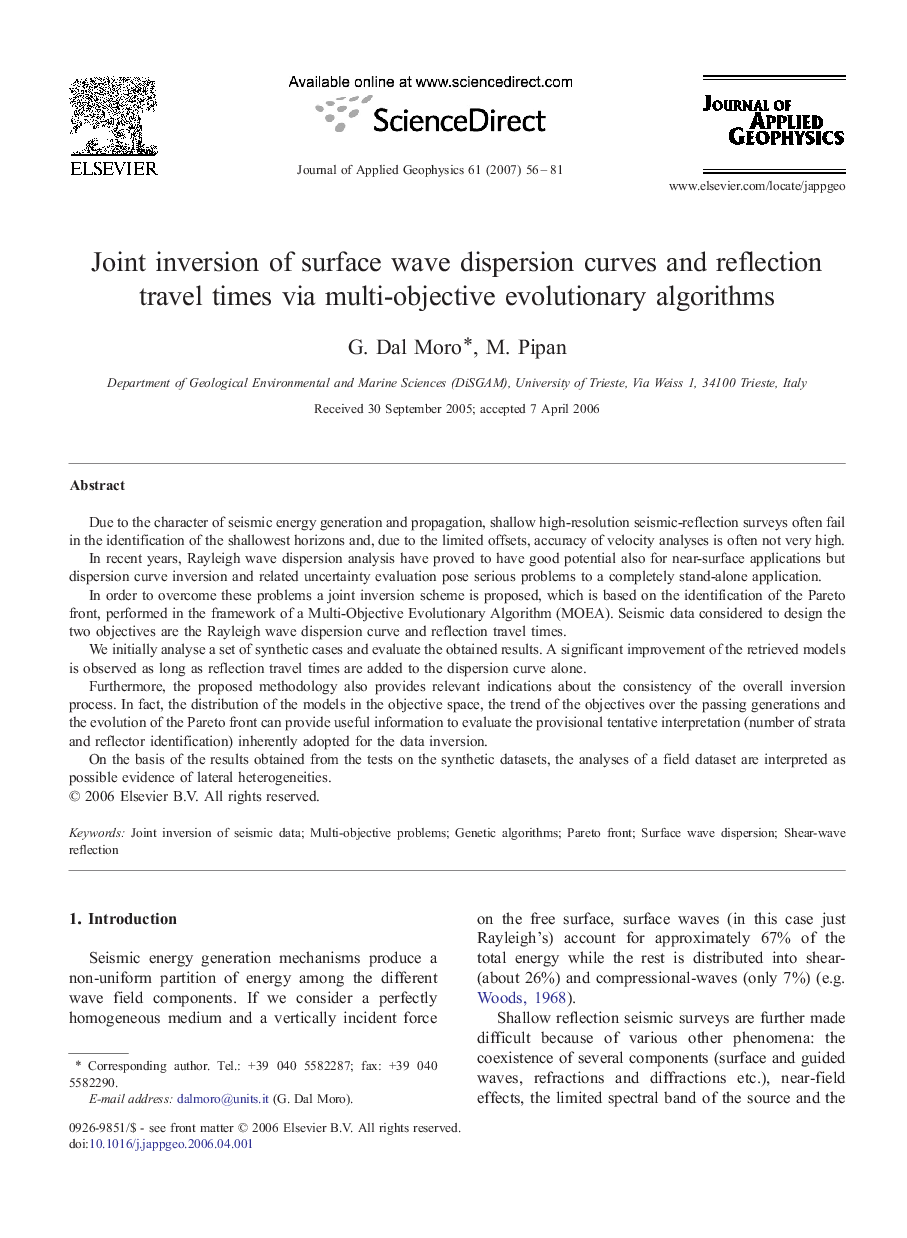| Article ID | Journal | Published Year | Pages | File Type |
|---|---|---|---|---|
| 4741238 | Journal of Applied Geophysics | 2007 | 26 Pages |
Due to the character of seismic energy generation and propagation, shallow high-resolution seismic-reflection surveys often fail in the identification of the shallowest horizons and, due to the limited offsets, accuracy of velocity analyses is often not very high.In recent years, Rayleigh wave dispersion analysis have proved to have good potential also for near-surface applications but dispersion curve inversion and related uncertainty evaluation pose serious problems to a completely stand-alone application.In order to overcome these problems a joint inversion scheme is proposed, which is based on the identification of the Pareto front, performed in the framework of a Multi-Objective Evolutionary Algorithm (MOEA). Seismic data considered to design the two objectives are the Rayleigh wave dispersion curve and reflection travel times.We initially analyse a set of synthetic cases and evaluate the obtained results. A significant improvement of the retrieved models is observed as long as reflection travel times are added to the dispersion curve alone.Furthermore, the proposed methodology also provides relevant indications about the consistency of the overall inversion process. In fact, the distribution of the models in the objective space, the trend of the objectives over the passing generations and the evolution of the Pareto front can provide useful information to evaluate the provisional tentative interpretation (number of strata and reflector identification) inherently adopted for the data inversion.On the basis of the results obtained from the tests on the synthetic datasets, the analyses of a field dataset are interpreted as possible evidence of lateral heterogeneities.
